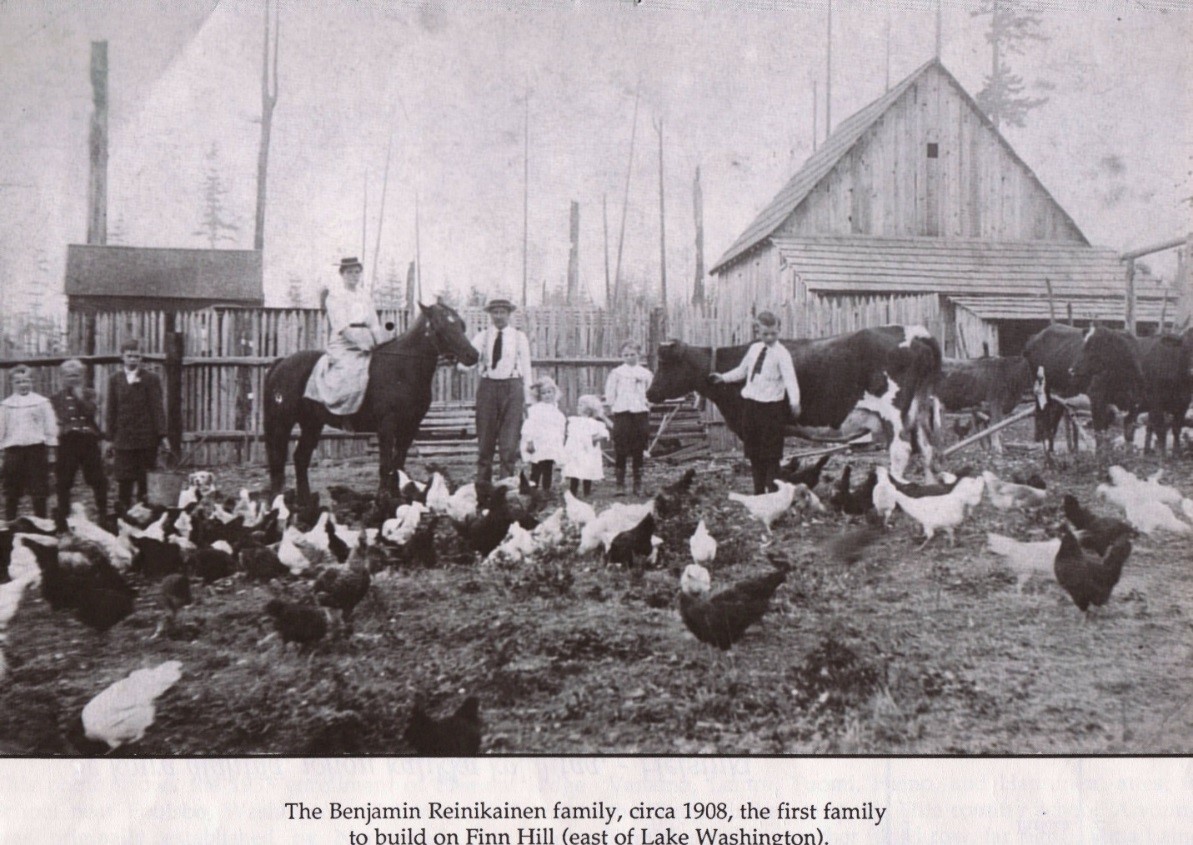3. Historical Context
Prior to European settlement, Douglas fir, western hemlock and western red cedar forests dominated Kirkland and Finn Hill. Fire was the major disturbance in the ecosystem, after which both understory shrubs and canopy trees would regenerate.1
Just south of Finn Hill at the mouth of Juanita Creek was a settlement of the Duwamish tribe called TUHB-tuh-byook’w. It was occupied by members of the Duwamish tribe and was part of a larger group of settlements on the eastern shore of Lake Washington in what is now Kirkland.2 These settlements were abandoned in the mid- to late-19th century after the Duwamish ceded 54,000 acres of land under the 1855 Treaty of Point Elliott.3
Early European settlers of Finn Hill were predominantly of Finnish descent. The first families settled in 1896; some of the 55 families in the area include the Reinikainen (later changed to Raine), Norman, Mielonen, Peltonen, Lindquist, Jarvi, Salmonson, and Haapa families.4 The Finnish language was spoken. Families would share Finnish-style bathhouses heated with wood. At one time there were three halls for community dances, plays, and other programs.
As elsewhere in Kirkland, these early settlers first logged the area, then burned and pulled out the massive stumps left behind to prepare the land for agriculture. The Woodins Logging Co. had a tramway to take the logs from the top of the hill to Juanita Bay. Fruit, dairy, and vegetables were among the crops grown.
The Inglewood neighborhood — now part of Finn Hill and the area of Finn Hill’s largest commercial development — was first platted and named by L.A. Wold in 1888.5 In the 1970s Paul Kirk designed a unique subdivision into 21 circular one-acre lots surrounded by common open space in the southeast area of Finn Hill.
O.O. Denny Park is named for Orion Denny, son of Seattle founder Arthur Denny. The property was Orion’s country estate and his widow willed it to the City of Seattle. The property was later used as a summer camp for kids before becoming open to the public as a park.
As Seattle was preparing for the 1962 World’s Fair, and the 10,000,000 people who would be coming to experience it, the Evergreen Point Floating Bridge was completed to connect Kirkland to Seattle. This led to a sharp increase in the population of communities on the Eastside, including Kirkland and Finn Hill.
Today, single-family residential has replaced farms and agriculture. Finn Hill was annexed into Kirkland in 2011.

Photo from the Barrie and Raine/Snow Collections.
Halpern, C. B., & Spies, T. A. (1995). Plant species diversity in natural and managed forests of the Pacific Northwest. Ecological Applications, 5(4), 913-934.
Coast Salish Villages of Puget Sound. Located at: http://coastsalishmap.org/new_page_6.htm.
Viltos-Rowe, Irene. Waste Not, Want Not—The Native American Way.
Kirkland Heritage Society records; Radford, Barbara. What’s in a Name located at: http://finnhillalliance.org/2013/12/whats-in-a-name-2/.
Majors, H. M. (1975). Exploring Washington. Van Winkle Publishing Company.


